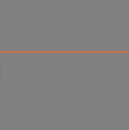




1. First prepare a square-shaped paper.
2. Fold a half of it to get a cross as guidelines just like this.
3. Fold it half again.
4. Fold it as the yellow lines demonstrated, and you will get the one shown in Diagram 5.
5. Do the same for the other side and you’ll get what’s in Diagram 7.
6. Open it up and what you’ll see is as Diagram 8.
7. Diagram 9 shows a side view of the same thing in Diagram 8.
8. Then, fold the orange line to link it with the doted orange line. Whereas the yellow line should be pushed in to the center (Diagram 10).
9. After that, you’ll get what’s in Diagram 11. Notice that the orange line and doted orange line has linked together, and the yellow line is at the center.
10. Do the same for the other side and you’ll get what’s in Diagram 12.
11. Diagram 13 provides a view from below of the same thing in Diagram 12.
12. Back to the top view (Diagram 14). Fold the yellow line to link with the orange one which indicates the center.
13. Your product will then be like as shown in Diagram 15.
14. Do the same for the other side and you’ll get Diagram 16.
15. Turn it over and do the same, and your product will be like Diagram 17.
16. Cut away the bottom as shown in Diagram 18 and you’ll get what’s in Diagram 19.
17. Open it up and you’ll get an octagon as shown in Diagram 20.
18. In Diagram 21, the doted yellow line indicates the part you needed to fold. Meaning, just to fold the top half to link with the center (the horizontal yellow line). Then you’ll get Diagram 22.
19. Turn it over with the folded part facing you (Diagram 23).
20. Now look carefully, this might be a little tricky. The idea is to fold 2 of the yellow lines and linking them together. As for the orange line, you will have to push it in.
21. Now here’s a slow motion for you. In Diagram 25, as you can see, the yellow lines are linking to each other, and the orange line is being pushed inside.
22. As you can see in Diagram 26, both the yellow lines are linked together, where the orange doted line indicates the one you pushed in previously.
23. Basically what you should be seeing now is Diagram 27.
24. Do the same for all the other sides. The principle is the same, like in Diagram 28. The orange one is the center you need to push in, and the yellow ones are to be linked.
25. Diagram 29 is what you’ll see for doing so. Whereas Diagram 30 provides a top view.
26. After you’ve finished folding every side, you’ll see what’s on Diagram 31. As for Diagram 32, it’s a view from the bottom. (Looks like a star, but we aren’t done yet.)
27. Diagram 33 is the side view. Note that the narrower part is the bottom and the broader part is the top.
28. Fold the tip as shown in Diagram 34, and you’ll get the result on Diagram 35.
29. Do the same for every side and you’ll get Diagram 36.
30. Diagram 37 is the end product for the previous step being viewed from the bottom. Notice that the bottom is even narrower now.
31. Back to the top. Grab two sides of the thing, and slowly pull it outwards as shown in Diagram 38. (Please be careful on this part for it might break the product)
32. Do the same for each side and you’ll get what’s in Diagram 39. Note that the center of the flower has been larger.
33. Then, pull the tip of each side down as shown in Diagram 40.
34. As you can see on Diagram 41, after pulling the tips down, the petals will be curved. (The yellow arrows showing that tips pulled down is hidden under)
35. And, there's the end product. We’re done! : )
*Remark: You could first choose some colour papers having 2 different colours at the center and the side. Thus, your flower could have different colour for the center and the petals.
Shared by,
Assistant pilot, Happy.
[Back to Craft World]
Labels: l. Altar Of Creations

















































